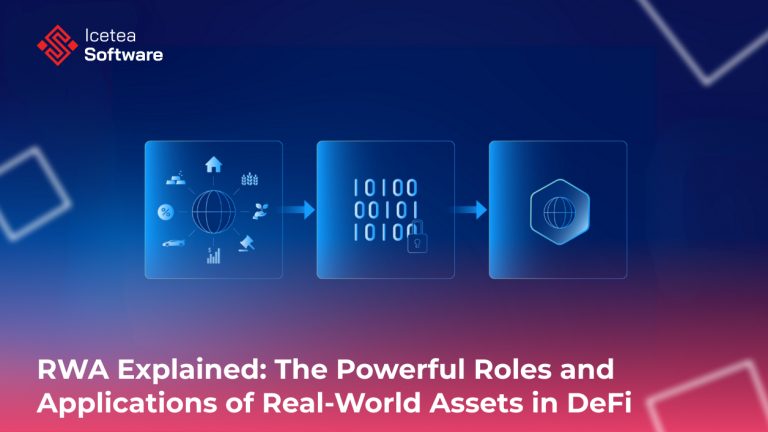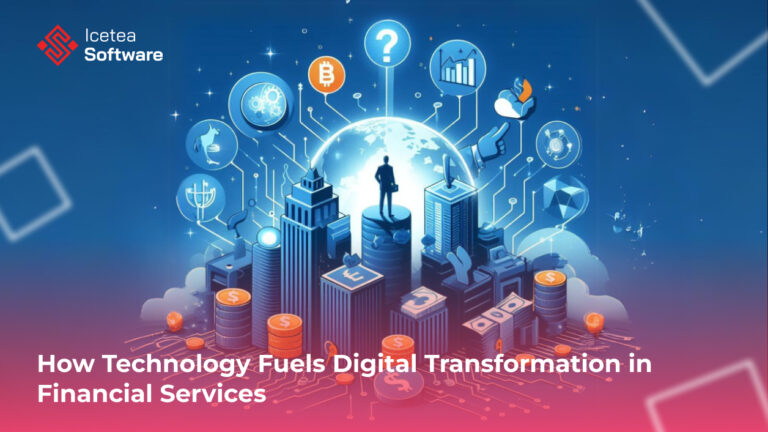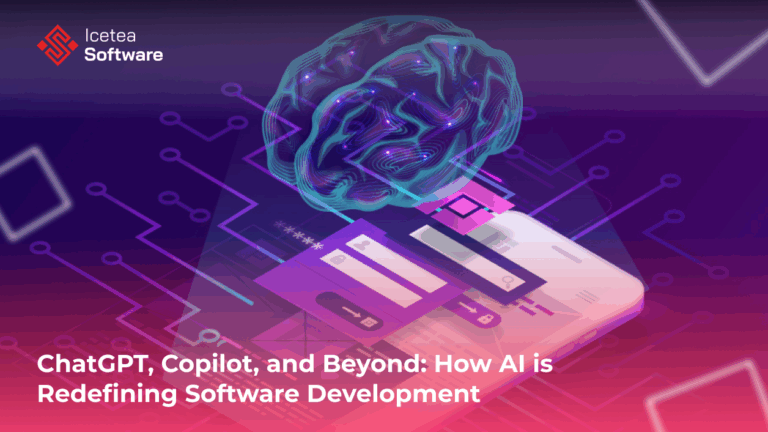Transforming Legacy IT Systems: Key Reasons and Best Practices
- What is Legacy IT Infrastructure?
- Why Modernizing Legacy Systems is Urgent
- The Benefits of IT Infrastructure Modernization
- Common Modernization Strategies
- Step-by-Step Guide to Modernizing Legacy IT Infrastructure
- Challenges and How to Overcome Them
- Real-World Example: A Bank’s Transition to Cloud
- Final Thoughts
In a world driven by real-time data, cloud computing, and digital-first customer experiences, legacy IT systems are no longer just outdated—they’re barriers to growth. For many enterprises, however, these legacy systems remain the backbone of critical operations, making modernization both a necessity and a challenge.
In this blog, we’ll explore what legacy IT infrastructure really means, the risks of keeping outdated systems, the benefits of modernization, and a step-by-step guide to future-proofing your IT landscape.
Meta description: Discover why modernizing legacy IT infrastructure is essential for business agility, security, and growth — and learn the step-by-step approach to do it right.
What is Legacy IT Infrastructure?
Legacy IT infrastructure refers to aging and outdated technologies—both hardware and software—that organizations continue to use, often because they are deeply embedded in daily operations or tied to critical business processes. These systems may include on-premises servers running obsolete or unsupported operating systems, monolithic applications that are rigid and difficult to update or scale, and custom-built software with little to no documentation, making maintenance a challenge. The underlying hardware is often approaching end-of-life, with limited or discontinued support from vendors, which increases operational risk.
Despite still performing basic functions, legacy systems typically fall short in meeting the demands of modern digital business environments. They often lack the scalability to support growing workloads, the speed to meet evolving user expectations, and the security needed to protect against contemporary cyber threats. Furthermore, they are rarely compatible with emerging technologies like cloud computing, AI, or API-based integrations, creating barriers to digital transformation initiatives. As a result, while these systems may seem cost-effective in the short term, they can significantly hinder agility, innovation, and long-term growth. Modernizing legacy infrastructure is not just about upgrading technology—it’s about enabling organizations to become more resilient, competitive, and future-ready.
Why Modernizing Legacy Systems is Urgent
1. Security Risks
Legacy systems are highly vulnerable to cyberattacks. Outdated software often no longer receives security patches, exposing organizations to ransomware, data breaches, and compliance violations.
2. Scalability Issues
Scaling legacy infrastructure is costly and slow. Businesses that want to grow, expand globally, or support digital channels find these systems holding them back.
3. Operational Inefficiencies
Manual workflows, data silos, and lack of integration with modern tools lead to inefficiencies and increased operational costs.
4. Talent Shortage
Fewer IT professionals are trained in legacy technologies like COBOL or mainframes. Recruiting and retaining skilled staff becomes increasingly difficult and expensive.
5. Incompatibility with Innovation
Whether it’s AI, machine learning, or IoT, most digital transformation initiatives require cloud-native, API-friendly environments that legacy systems simply don’t support.
The Benefits of IT Infrastructure Modernization
Improved Agility
Modern systems enable faster deployment of new features, services, and updates, allowing businesses to stay competitive in fast-moving markets.
Enhanced Security and Compliance
Modern cloud-based infrastructure comes with built-in compliance, monitoring, and security features to better protect sensitive data.
Cost Optimization
Shifting to cloud or hybrid models reduces maintenance overhead, capital expenditures, and energy costs, enabling predictable, usage-based billing.
Better User and Customer Experience
Reliable, responsive, and integrated systems improve employee productivity and customer satisfaction across digital channels.
Common Modernization Strategies
There’s no one-size-fits-all approach, but here are the most common strategies for modernizing legacy infrastructure:
1. Rehosting (Lift-and-Shift)
Move applications from on-premises servers to cloud infrastructure with minimal changes. It’s fast and cost-effective, but doesn’t fully leverage cloud-native capabilities.
2. Replatforming
Move to the cloud but introduce some optimizations—like containerization or changing the database. It strikes a balance between effort and benefit.
3. Refactoring / Rearchitecting
Redesign applications using modern architectures (e.g., microservices) to improve scalability and performance. This is resource-intensive but offers long-term value.
4. Replacing / Retiring
In some cases, it’s better to replace legacy applications with off-the-shelf SaaS products or retire unused systems to reduce complexity.
5. Encapsulation
Wrap legacy systems with APIs or middleware to enable interaction with newer applications without changing the core codebase.
Step-by-Step Guide to Modernizing Legacy IT Infrastructure
Step 1: Conduct an IT Infrastructure Audit
Begin by creating a complete inventory of your existing systems. This includes servers, applications, databases, storage solutions, and network configurations. Identify which components are outdated, unsupported, or pose security risks. Evaluate the interdependencies between systems, assess current performance metrics, and calculate the total cost of ownership (TCO). This audit helps expose technical debt, redundant assets, and business-critical systems that require careful handling during modernization.
Step 2: Define Clear Goals
Before any technical changes are made, establish well-defined objectives. These could range from reducing operational costs and improving system availability to enhancing data security, compliance, or driving innovation through digital transformation. Engage stakeholders across business and IT to align these goals with broader business strategies and measurable KPIs. A clear vision ensures modernization efforts stay focused and justifiable to leadership.
Step 3: Choose the Right Modernization Path
There is no one-size-fits-all approach to legacy modernization. Depending on the system’s age, value, and complexity, consider options such as:
- Rehosting (Lift and Shift): Move applications to the cloud with minimal changes.
- Replatforming: Modify components to better fit cloud environments.
- Refactoring/Re-architecting: Redesign applications to be more modular or cloud native.
- Replacing: Retire outdated software and switch to commercial SaaS solutions.
- Retiring: Eliminate unused or redundant systems altogether.
Evaluate trade-offs between cost, time, scalability, and long-term ROI to select the most appropriate path for each workload.
Step 4: Develop a Migration Roadmap
Once the strategy is set, design a phased roadmap. Break modernization into smaller, manageable sprints with clear milestones. Prioritize systems based on risk and business criticality. To ensure minimal disruption, schedule migrations during off-peak hours or maintenance windows. Include rollback plans and backup strategies in case of failure. Communication with stakeholders during each phase is vital for ensuring alignment and trust.
Step 5: Build a Cross-Functional Team
Successful modernization requires collaboration beyond the IT department. Assemble a multidisciplinary team that includes:
- IT Operations and DevOps Engineers
- Application Owners and Business Analysts
- Cybersecurity Experts
- Change Management Leaders
- External Cloud or Modernization Consultants (if necessary)
This diverse team structure helps bridge the gap between technical execution and business objectives while ensuring compliance and risk mitigation.
Step 6: Embrace Automation and DevOps
To speed up deployment, reduce manual errors, and maintain consistency, integrate modern practices such as:
- CI/CD pipelines for faster testing and delivery
- Containerization (Docker) and orchestration (Kubernetes) for flexible deployment
- Infrastructure as Code (IaC) using tools like Terraform or Ansible for reproducible infrastructure setups
DevOps methodologies enhance collaboration, reduce downtime, and make future updates more agile and repeatable.
Step 7: Monitor, Test, and Optimize
Modernization doesn’t end at deployment. Post-migration, implement robust monitoring tools to track application performance, infrastructure health, and security vulnerabilities. Collect user feedback to understand the end-user experience. Continuously test for performance bottlenecks, downtime risks, or security gaps. Use insights to fine-tune the system, reinforce automation, and guide future upgrades or optimizations.
Challenges and How to Overcome Them
| Challenge | Solution |
| High upfront costs | Start small, use phased implementation, and measure ROI incrementally |
| Downtime risk | Use blue-green deployments, backup systems, and test environments |
| Resistance to change | Educate stakeholders on benefits, and engage users early in the process |
| Skills gap | Invest in training or partner with experienced IT consultants |
Real-World Example: A Bank’s Transition to Cloud
A large regional bank operating on mainframes faced rising costs, security gaps, and slow service delivery. After conducting a tech audit, the IT team chose to replatform critical services onto AWS while retiring redundant tools.
Within 12 months:
- Operational costs were cut by 30%
- Incident response time dropped by 50%
- Customer satisfaction improved due to faster digital banking features
Final Thoughts
Legacy IT systems may still run — but they often hold businesses back from scaling, securing, and innovating effectively. At Icetea Software, we understand that modernization is no longer optional — it’s a strategic move toward agility, resilience, and long-term growth.
Modernizing isn’t just about swapping out old tech. It’s about aligning your infrastructure with business goals, enabling cloud capabilities, improving security, and reducing technical debt. Whether it’s rehosting, refactoring, or rebuilding, each approach should be tailored to your needs.
————————–
𝗜𝗰𝗲𝘁𝗲𝗮 𝗦𝗼𝗳𝘁𝘄𝗮𝗿𝗲 – Cutting Edge Technologies!
Website: iceteasoftware.com
LinkedIn: linkedin.com/company/iceteasoftware
Facebook: Icetea Software








